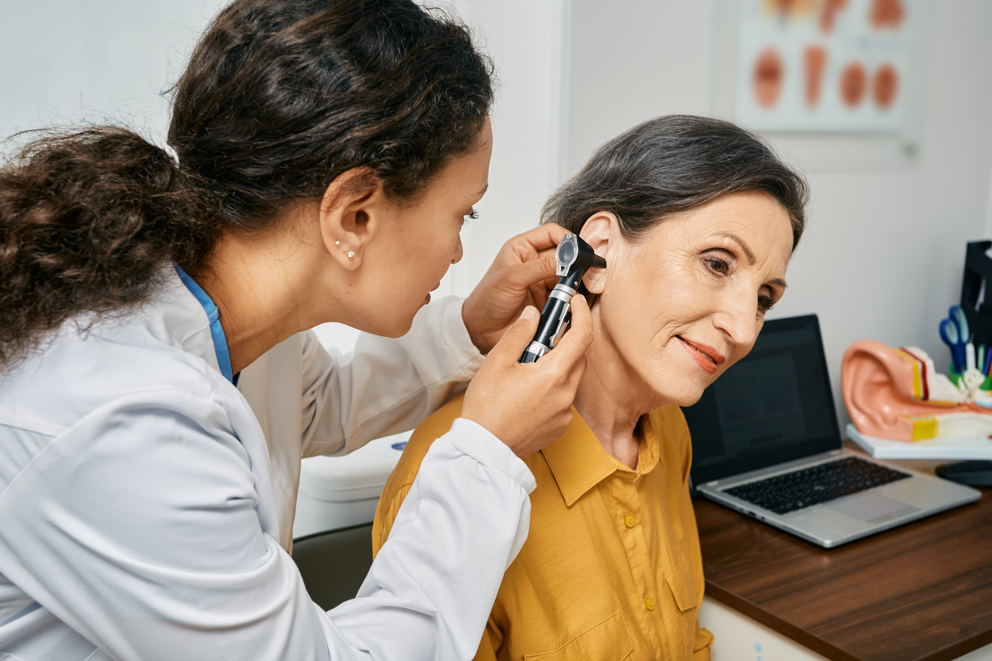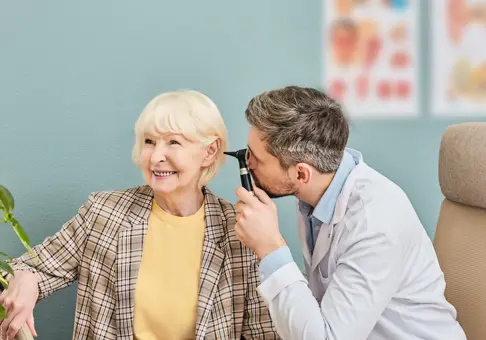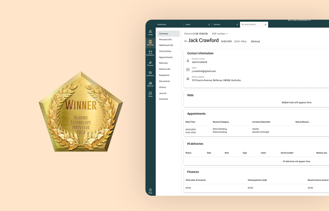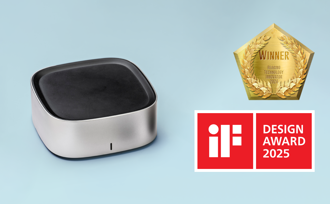
Word-of-mouth referrals are extremely powerful. When people need a new product or service, they often ask for recommendations from their loved ones. The same is true if they need a new healthcare provider, including an audiologist. People trust their loved ones’ recommendations, so be sure to tap into your customer network for referrals to expand your client database. If done systematically and in a relevant way, a significant part of your new customers can stem from this channel.
Statistics show that 92% of consumers trust referrals from somebody they know. Customers believe their friends’ recommendations 7x more than traditional advertising. And word-of-mouth recommendations are the most powerful psychological driver for purchases.
Therefore, it’s a good idea to implement and prioritize a referral program. This low-cost, high-reward endeavor can be one of the best ways to increase traffic to your hearing centers. A good Friends & Family Referral Program can generate new clients, increase sales, and boost customer loyalty.
To Start a Friends & Family Referral Program In Your Clinic, We Recommend That You:
Step 1: Provide Excellent Service, Care, and Products
It’s critical to provide excellent service, care, and products before even thinking about implementing a referral program. If your hearing center’s services and products aren’t amazing, customers won’t recommend others to you, no matter how well you’ve structured your referral program.

Be sure to:
- Offer exceptional customer service. Provide friendly, professional interactions at every customer touchpoint. Be welcoming, remember details about each client’s medical history and needs, tailor your conversation around their lives (e.g., hobbies, children/grandchildren, pets), and always make them feel appreciated and valued. Understand how their hearing loss is impacting their lives and recommend solutions to meet their unique needs.
- Have a well-stocked inventory of products. This means offering options at a variety of price points to suit each customer’s specific needs and budget. Provide innovative products and explain why certain hearing aids and accessories would be best for each customer.
- Conduct proper onboarding with new customers and new products. Show customers how to use their new hearing aids and provide them with basic information about how to care for, clean, and store their devices. Provide answers to frequently asked questions and troubleshoot, as necessary, if they’re experiencing problems or having concerns. Making sure customers are informed about – and comfortable with – their hearing devices is another way to demonstrate excellence and differentiate yourself from the competition.
Learn how to guide your customer hearing aid experience through the initial follow-up period and beyond to ensure that customers remain satisfied from our blog: Improving satisfaction rates for hearing aid users
Providing extraordinary customer care will boost satisfaction and loyalty. Remember: Happy customers are far more likely to refer a friend or relative to your clinic.
Step 2: Entice Key Audiences With Fantastic Rewards
Your referral program will be much more successful if you entice key audiences with rewards. You’ll want to motivate (and incentivize) three distinct audiences – existing customers, prospective clients, and not least your staff – to participate in your referral program.
✨Referring Clients – Motivate existing customers to refer their friends and relatives, then reward them for their referral. Make the rewards something they’ll enjoy, but nothing too extravagant. Ideas could include:
- A gift card to your shop for an accessory, batteries, or other relevant products
- A gift card to a local restaurant or store
- A gift card to the cinema or a spa
- Gourmet cookies or pastries
- Flowers
To make sure that your clients act promptly, include a deadline for the incentive: “Refer your friend or relative before THIS DATE (ideally within 3-5 weeks) and get rewarded.” This way you can also see the traction of your campaign.

✨New Referred Clients – Once they’ve received the word-of-mouth referral from your client, make it easy for new prospects to book an appointment and visit your shop. Consider offering them a value voucher as an incentive to book their first appointment. Make the offer expire in two months to create urgency around acting quickly. The voucher could be used for:
- A discount on their first hearing aid or accessory
- Free batteries
- Free hearing aid service for a year
- A free battery tester
✨Staff – Track and reward staff effort, either individually or as a team. Some shops track each individual employee’s efforts in the practice management system, rewarding the staff member that prompted the most client referrals in a particular month. Others opt to reward the entire team at certain intervals and milestones (e.g., once we hit the 20th or 50th new hearing aid user because of the referral program, the whole team gets a prize.) Rewards could include:
- Gift cards to local restaurants or stores (individual reward)
- A spa service, such as a facial or manicure (individual reward)
- A financial bonus (individual award)
- Party at a nearby restaurant (team reward)
- A food truck for lunch (team reward)
- Breakfast, lunch, or tea (team reward)
Step 3: Incorporate The “Ask” Into Your Workflow
Incorporate the “ask” into the clinical workflow. This helps make it part of the routine interaction with customers. Remind staff to be friendly, professional, and direct in their “ask.” Since asking for referrals is now a standard part of your workflow, be sure to insert this into your practice management system as a tick box to fill in.

Asking for a referral may feel intimidating to some of your employees, so make it as easy (and as comfortable) as possible for them:
- Create messaging. This helps employees become familiar with what to say when discussing this program. Provide employees with messaging or a script with information about the referral program. Discuss this pitch with your staff in an all-team meeting, and make sure your audiologists and other staff members feel comfortable with the messages.
- Determine timing. The best referrals come after the client has experienced the value that you deliver, so decide when your staff should ask for a referral as part of your standard procedure. This could be after a hearing aid sale, the last hearing aid fitting, or the client’s first follow up appointment. Whatever you decide, make it standard practice across your enterprise. All clinicians and other employees should be consistent about when (and how) they ask customers for referrals.
- Provide training. Proper training will help ensure that all employees understand what to say and when to say it. It can be helpful to do “role play” exercises to help employees feel comfortable explaining the program and asking for referrals.
- Create materials. Develop materials, such as referral cards or flyers, for staff to give customers at their visits. It’s also helpful to send follow up emails or texts reminding customers about the referral program, with links they can send to their networks.
Reiterate the incentives – Make sure employees understand the incentive program and the rewards you’re offering for three key audiences – employees, referring customers, and new/prospective customers. Ask for employee input on the rewards you’re offering to help them feel more invested in the program.
Step 4: Track Incoming Leads
Tracking your program will allow you to see where the leads are coming from, which employees are excelling, which incentives work best, etc. It’s simple to track your referrals in your Auditdata Practice Management System, as it provides full transparency and valuable reporting that allows you to see the results of this program. You’ll be able to easily measure and track HCPs, locations, KPIs, sales performance, number of referrals booking an appointment, total sales from referrals, and other key metrics.
Tracking this information can help you see how well the program is working and determine whether any elements need to be changed moving forward.
Step 5: Reward Loyal Customers
Be sure to thank – and reward – your loyal customers when their referred friends and family members visit your hearing centers and make a purchase.

We recommend that you compose a hand-written thank you note to accompany the rewards you’re sending to each referring client. The note should be sincere and heartfelt, telling the customer how much you appreciate their business – and their referral. As a surprise, it may be sent with a bouquet of flowers or another small recognition.
Referral programs are an effective, affordable, easy-to-implement way to attract new customers, boost sales, and increase other KPIs.
Our Practice Management System, Manage, offers complete visibility of the data you need to make strategic decisions for customer loyalty.
Other Blogs You Might Enjoy:

3 Steps to Expanding Your Friends & Family Referral Program to Maximize Success
Learn how to broaden your existing program and expand your reach with direct marketing communication targeting your most loyal clients. By activating your client database and digitalizing the program, expanding your reach will give you even more new customers.

Why No One Wants To Wear a Hearing Aid And What We Can Do to Change That
No one wants to have a hearing loss, and most people are not excited about the prospect of needing hearing aids. How can you, as a hearing care provider, help them overcome the barriers and realize the benefits of getting hearing aids?

A Hearing Clinic’s Flexibility is a Key to Success
Provide the highest quality care for customers and make the treatment process as easy and convenient as possible. Offer extended hours, keep the schedules running smoothly to prevent long wait times, and offer same day emergency appointments. By doing so, you’ll attract new prospects, elevate your customer service, and boost client loyalty and satisfaction.
Don't Miss Out On the Latest Insights On Audiology
Sign up today to receive exciting updates, tips, and the latest newsletters from Auditdata.





